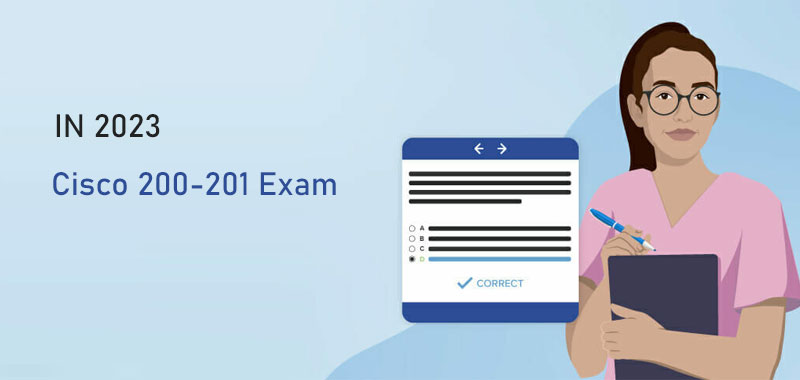
Lead4Pass 300-420 dumps meet the CCNP Enterprise 300-420 ENSLD exam requirements

leads4pass 300-420 dumps cover the complete CCNP Enterprise 300-420 ENSLD certification exam questions and answers that meet the exam pass requirements.
Use 2022-2023 300-420 dumps https://www.leads4pass.com/300-420.html, practice 225 latest exam questions, and answers to ensure that you can easily pass the CCNP Enterprise 300-420 ENSLD certification exam.

Read 15 free leads4pass 300-420 dumps exam questions and answers online:
| Number of exam questions | Exam name | Exam code |
| 15 | Designing Cisco Enterprise Networks (ENSLD) | 300-420 |
Question 1:
Which consideration must be made when designing a Cisco SD-Access fabric underlay?
A. Subnets must be reduced to decrease latency.
B. Up to six control planes are supported.
C. The default MTU should be increased.
D. A unified policy must be used.
Correct Answer: B
Question 2:
What is the role of a control-plane node in a Cisco SD-Access architecture?
A. fabric device that connects wired endpoints to the SD-Access fabric
B. map system that manages endpoint-to-device relationships
C. fabric device that connects APs and wireless endpoints to the SD-Access fabric
D. map system that manages External Layer 3 networks
Correct Answer: B
Question 3:
Refer to the exhibit.

A customer needs to apply QoS to the network management traffic passing through the GigabitEthernet0/2 interface.
All eight queuing classes are in use, so the new requirement must be integrated into the existing policy.
Which solution must the customer choose?
A. Mark traffic to DSCP CS5 and assign it to the SIGNALLING class. Then, baseline existing queue sizes to determine if additional bandwidth can be provisioned to the SIGNALLING class.
B. Mark the traffic to DSCP CS4 and assign it to the SIGNALLING class. Then, prioritize traffic within the class.
C. Mark the traffic to DSCP CS6 and assign it to the ROUTING class Then, prioritize traffic within the class.
D. Mark the traffic to DSCP CS2 and assign it to the ROUTING class Then, baseline existing queue sizes to determine if additional bandwidth can be provisioned to the ROUTING class
Correct Answer: D
Question 4:
Which solution allows overlay VNs to communicate with each other in an SD-WAN Architecture?
A. External fusion routers can be used to map VNs to VRFs and selectively route traffic between VRFs.
B. GRE tunneling can be configured between fabric edges to connect one VN to another.
C. SGTs can be used to permit traffic from one VN to another.
D. Route leaking can be used on the fabric border nodes to inject routes from one VN to another.
Correct Answer: B
Question 5:
In an SD-WAN architecture, which methods are used to bootstrap a vEdge router?
A. DHCP options or manual configuration
B. manage or DNS records
C. ZTP or manual configuration
D. DNS records or DHCP options
Correct Answer: C
Question 6:
Which feature is used to optimize the WAN bandwidth of IGMP network traffic among WAN Edge routers in the same VPN?
A. IGMPv2
B. multicast RP
C. multicast-replicator
D. multicast service routes
Correct Answer: A
Question 7:
Which two techniques improve the application experience in a Cisco SD-WAN design? (Choose two.)
A. utilizing forward error correction
B. implementing a stateful application firewall
C. implementing AMP
D. utilizing quality of service
E. implementing Cisco Umbrella
Correct Answer: AD
Reference: https://www.cisco.com/c/dam/en/us/solutions/collateral/enterprise-networks/sd-wan/nb-06-cisco-sd-wan-ebook-cte-en.pdf slide 33
Question 8:
An engineer must design a multicast network for a financial application. Most of the multicast sources also receive multicast traffic (many-to-many deployment model).
To better scale routing tables, the design must not use source trees.
Which multicast protocol satisfies these requirements?
A. PIM-SSM
B. PIM-SM
C. MSDP
D. BIDIR-PIM
Correct Answer: D
Bidir-PIM is designed to be used for many-to-many applications within individual PIM domains. Multicast groups in bidirectional PIM mode can scale to an arbitrary number of sources without incurring overhead due to the number of sources.
Question 9:
Refer to the exhibit. An architect must create a stable and scalable EIGRP solution for a customer. The design must:
1.
conserve bandwidth, memory, and CPU processing
2.
prevent suboptimal routing
3.
avoid any unnecessary queries
Which two solutions must the architect select? (Choose two.)

A. route summarization
B. prefix lists
C. distribute lists
D. stub routing
E. static redistribution
Correct Answer: AC
Question 10:
Refer to the exhibit.

An engineer is designing a routing solution for a customer. The design must ensure that a failure of network 10.1.0.0/24, 10.1.2.0/24, 10.2.1.0/24, or 10.2.3.0/24 does not impact the core.
It also requires fast convergence time during any link failover in the core or access networks.
Which solution must the engineer select?
A. Add aggregation layer between core and access networks.
B. Enable graceful restart on routers A and C.
C. Enable FRR for the connected networks of routers A and C.
D. Enable summarization on routers A and C.
Correct Answer: C
Question 11:
Refer to the exhibit.

EIGRP has been configured on all links. The spoke nodes have been configured as EIGRP stubs, and the WAN links to R3 have higher bandwidth and lower delay than the links to R4.
When a link failure occurs at the R1-R2 link, what happens to traffic on R1 that is destined for a subnet attached to R2?
A. R1 has no route to R2 and drops the traffic
B. R1 load-balances across the paths through R3 and R4 to reach R2
C. R1 forwards the traffic to R3, but R3 drops the traffic
D. R1 forwards the traffic to R3 in order to reach R2
Correct Answer: A
The EIGRP stub routing feature will prevent the remote device from advertising core routes back to the distribution devices.
Routes learned by the remote device from Distribution 1 will not be advertised to Distribution 2. Therefore, Distribution 2 will not use the remote device as a transit for traffic destined for the network core
Question 12:
A client is moving to Model-Driven Telemetry and requires periodic updates. What must the network architect consider with this design?
A. Updates that contain changes within the data are sent only when changes occur.
B. Empty data subscriptions do not generate empty update notifications.
C. Periodic updates include a full copy of the data that is subscribed to.
D. The primary push update is sent immediately and cannot be delayed.
Correct Answer: C
Periodic updates contain a full copy of the subscribed data element or table for all supported transport protocols
Question 13:
An ISP provides Layer 3 VPN service over MPLS to a customer with four branches and multiple CE routers at each branch.
To exchange the routes that are learned from the CE routers, which BGP address family should the ISP activate among the PE routers?
A. address-family multicast
B. L2VPN EVPN
C. VPNv4 unicast
D. IPv4 unicast
Correct Answer: C
Question 14:
A company with multiple service providers wants to speed up BGP convergence time in the event a failure occurs with their primary link.
Which approach achieves this goal and does not impact router CPU utilization?
A. Utilize BFD and tune the multiplier to 50
B. Lower the BGP hello interval
C. Decrease the BGP keepalive timer
D. Utilize BFD and keep the default BGP timers
Correct Answer: D
Question 15:
An engineer must propose a solution for a campus network that includes the capability to create multiple Layer 3 virtual networks.
Each network must have its own addressing structure and routing table for data forwarding.
The solution must be scalable to support hundreds of virtual networks and allow simple configuration and management with minimal administrative overhead.
Which solution does the engineer recommend?
A. hop-by-hop EVN
B. multihop MPLS core
C. multihop IPsec tunneling
D. hop-by-hop VRF-Lite
Correct Answer: A
…
leads4pass 300-420 dumps are edited and reviewed by the Cisco expert team and meet the requirements for passing the CCNP Enterprise 300-420 ENSLD exam. Candidates can download 300-420 dumps pdf or 300-420 dumps VCE: https://www.leads4pass.com/300-420.html (300-420 dumps), 100% guarantee to successfully pass the CCNP Enterprise 300-420 ENSLD exam.

![[New May 2023] Updated 300-425 Dumps For 300-425 ENWLSD Exam](https://www.ciscoexampdf.com/wp-content/uploads/2023/05/Updated-300-425-Dumps.jpg)
